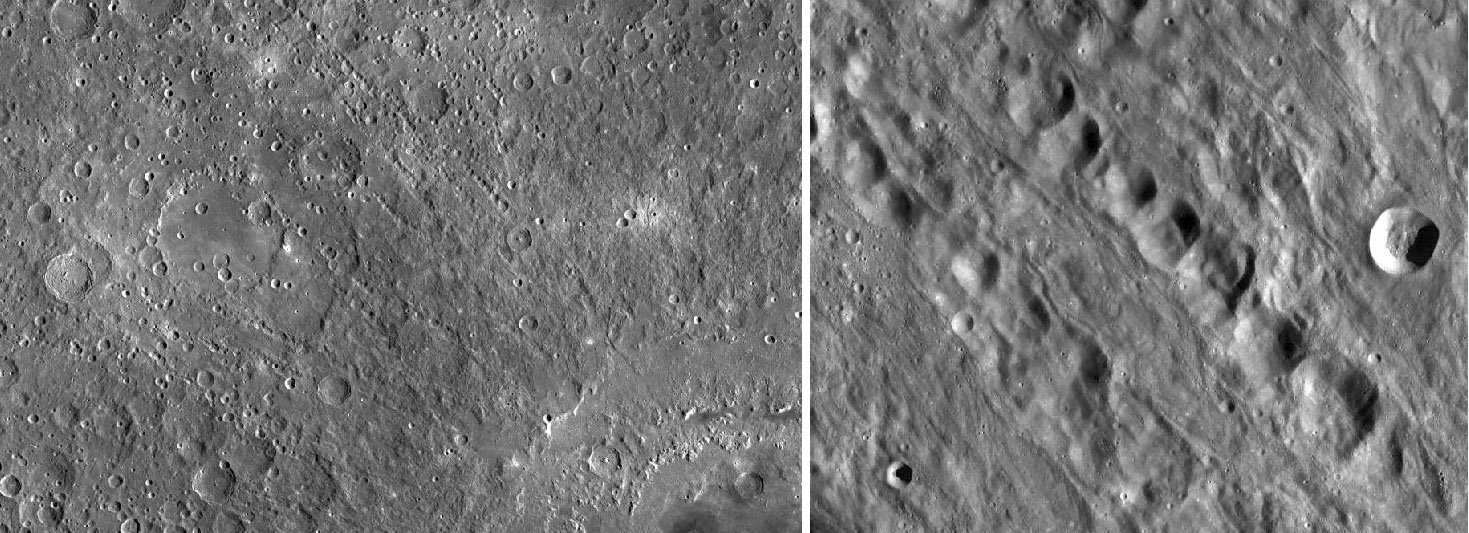Difference between revisions of "August 13, 2012"
| Line 20: | Line 20: | ||
<em>[mailto:tychocrater@yahoo.com Chuck Wood]</em><br /> | <em>[mailto:tychocrater@yahoo.com Chuck Wood]</em><br /> | ||
<br /> | <br /> | ||
| + | <p><b>Yesterday's LPOD:</b> [[August 12, 2012|Not Seeing All the Moon]] </p> | ||
| + | <p><b>Tomorrow's LPOD:</b> [[August 14, 2012|Seeing Through a Glass Clearly]] </p> | ||
<hr /> | <hr /> | ||
| − | |||
| − | |||
| − | |||
| − | |||
| − | |||
| − | |||
| − | |||
| − | |||
| − | |||
| − | |||
| − | |||
| − | |||
Revision as of 12:22, 7 February 2015
Chains

LRO QuickMap images from NASA/ASU
Crater chains excavated by lines of ejecta spewed out during the formation of impact basins are sparely seen on the nearside.
The Snellius and Rheita valleys are the most visible, while the Baade and Bouvard valleys are hard to appreciate. Remnants of
possible other basin secondary chains are sometimes proposed but proof is difficult. The little-degraded secondary chains of
the Orientale Basin provide clues to what might have originally existed around other basins. A broad swath of chains radiates
to the northwest of Orientale, stretching at least 2000 km from the basin center. Near the basin rim the terrain is covered with
thick and swirly textured debris with the chains becoming more prominent further out. Individual chains - like the Leuschner
Chain and an unnamed one next to it (image above right) - are made up of lines of 10-30 km wide craters, surrounded by tongues
of material that flowed - probably like a hurricane - across the surface. Surprisingly, there are few Orientale secondary chains
in other radial directions. A concentration does occur to the basin's south, southeast (beyond this image) but only occassional
chains are seen elsewhere. This may be consistent with an oblique impact for Orientale or another unknown factor may be
responsible. The paucity of readily seen nearside chains implies that the rate of bombardment was high enough to severely
modify nearly all of them, but the rate drastically declined after Orientale, leaving its chains in nearly pristine condition.
Chuck Wood
Yesterday's LPOD: Not Seeing All the Moon
Tomorrow's LPOD: Seeing Through a Glass Clearly



